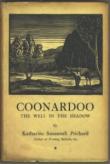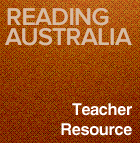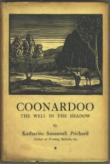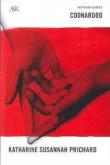AustLit
Latest Issues
AbstractHistoryArchive Description
Reading Australia
This work has Reading Australia teaching resources.
Unit Suitable For
AC: Year 12 (Literature Unit 3). Also suitable for Year 10 English and Year 11 Literature.
Themes
Aboriginality, Australian country life, love, prejudice, reconciliation, relationships
General Capabilities
Intercultural understanding, Literacy
Cross-curriculum Priorities
Aboriginal and Torres Strait Islander histories and cultures
Publication Details of Only Known VersionEarliest 2 Known Versions of
Other Formats
- Braille.
- Sound recording.
Works about this Work
-
‘As My Great Day Approaches’: Katharine Susannah Prichard in 1969
2019
single work
biography
— Appears in: Westerly , vol. 64 no. 2 2019; (p. 129-137) 'In the archives, after a life in black and white, Katharine Susannah Prichard bursts into colour at the end of her life. The ten minute home video lingers reverentially over the white-haired woman. It captures her doing ordinary things at her home in Greenmount in the hills of Perth— writing at her desk, standing outside her writing cabin, posing in front of a blooming wattle bush in her garden, drinking tea on her verandah with friends. All through it she is talking, talking, talking, but her words are lost; there is no sound. Usually things are the other way around—all words and no visuals.' (Introduction) -
Australien
2019
single work
criticism
— Appears in: Verdenslitteraturer : Introduktion til litteraturen uden for Europa 2019; (p. 253-284) -
"Australia Is Very American" : Australian Historical Fiction in America 1920s-1940s
2018
single work
criticism
— Appears in: Australian Books and Authors in the American Marketplace : 1840s-1940s 2018; (p. 231-270)The previous chapter revealed how, in the early 1930s, Norton's publication of Henry Handel Richardson s Ultima Thule and the Fortunes of Richard Mahony trilogy brought Australia and its literature "deep into the consciousness of reading America' The impact of Richardson's novels was strengthened by the appearance of Katharine Susannah Prichard's Coonardoo in 1930 from the same publisher. Richardson's and Prichard's novels were in fact part of a longer sequence of ambitious Australian works published in the United States from the late 1920s to the mid 1940s. In contrast to the decline in the number of Australian novels published in America across the first three decades of the twentieth century, at the very end of the 1920s we begin to see a cluster of substantial novels appearing together - and being brought together by reviewers. Fiction publishing in general in the United States grew rapidly from a low point in 1919 to a peak in 1929; the number of titles dipped slightly through the Depression years but high levels continued until the early forties. Against this background, the pattern of publication and increased receptivity for Australian novels was sustained until the mid-forties, but with little continuity into the postwar years when many writers had, in effect, to begin again in establishing the viability of Australian work in the American marketplace. There is, then, a relatively discrete historical trajectory across the two decades from the late twenties, emerging from almost nothing and collapsing in the later forties as both cultural and industrial circumstances change.' (Introduction)
-
Becoming Articulate : Henry Handel Richardson and Katharine Susannah Prichard
2018
single work
criticism
— Appears in: Australian Books and Authors in the American Marketplace : 1840s-1940s 2018; (p. 195-230)'From the late 1920s to the early 1940s, American reviewers were often compelled to remark on the increasing presence of Australian books and authors in the American marketplace. The publication in short succession of Henry Handel Richardson's The Fortunes of Richard Mahony trilogy (1929-30) and Katharine Susannah Prichard's Working Bullocks (1927) and Coonardoo (1930) appeared to announce Australia's literary coming of age: "Australia at last seems to have become articulate, when in so short a space of time it can produce such books as Henry Handel Richardson's Ultima Thule, Miss Prichard's own Working Bullocks and this fine story of white codes and primitive codes mixed and never fusing [Coonardoo]"; "Australia is taking her place as an important contributor to English letters ... It is no longer possible to ignore that country's claim to a definite attention") By comparison to the authors discussed in the previous chapter, Richardson and Prichard together could draw attention, not just to individual hooks by Australian authors, but to works of literature about Australia and hence to the idea of Australian literature itself. As one US reviewer put it, Ultima Thule had "brought the Australian country into the deep consciousness of reading America" and Coonardoo promised to do the same. Another concluded that "those who maintain that no literature comes out of Australia are beginning to revise their opinions as each new book is announced by Henry Handel Richardson, Katherine Susannah Pritchard [sic] and Dorothy Cottrel [sic]".' (Introduction)
-
Renegotiating the American Connection : Australian Fiction 1900-1930s
2018
single work
criticism
— Appears in: Australian Books and Authors in the American Marketplace : 1840s-1940s 2018; (p. 111-160)'The first three decades of the twentieth century present no clear pattern for the publication of Australian novels in the United States outside the serial relationships with publishers that certain genre writers were able to achieve. Otherwise, in all but a few cases, we see one-off or occasional publishing, with few signs of sustained investment in individual authors and even less in Australian books per se. Towards the end of the period, however, the situation changes quite suddenly with the enormous critical and sales success of Henry Handel Richardson's Ultima Palk in 1929, followed the year after by Katharine Susannah Prichard's Coonardoo, and these two authors will be the subject of Chapter 6. The present chapter surveys the presence in the American marketplace of Australian writers working in the broad field of commercial fiction but outside the popular genres of crime, mystery and women's romance. It examines the obstacles and opportunities for Australian authors and stories in America in these decades after the passing of international copyright legislation in the United States and as the structures of the modem, twentieth-century US publishing industry were set in place.' (Introduction)
-
The Romance of an Aboriginal
1929
single work
review
— Appears in: The Black Swan : The Magazine of the Guild of Undergraduates of the University of Western Australia The , vol. 13 no. 2 1929; (p. 20-22)
— Review of Coonardoo : The Well in the Shadow 1928 single work novel -
Gerald Gould Praises 'Coonardoo'
Some Views, News and Reviews
1929
single work
review
— Appears in: All About Books , 20 August vol. 1 no. 9 1929; (p. 282)
— Review of Coonardoo : The Well in the Shadow 1928 single work novel -
'Coonardoo'
1929
single work
review
— Appears in: All About Books , 20 September vol. 1 no. 10 1929; (p. 305-304)
— Review of Coonardoo : The Well in the Shadow 1928 single work novel -
Trailblazing Black-White Tale
2006
single work
review
— Appears in: The Courier-Mail , 4 - 5 November 2006; (p. 22)
— Review of Coonardoo : The Well in the Shadow 1928 single work novel -
[Review] Coonardoo : The Well in the Shadow
1929
single work
review
— Appears in: The Capricornian , 19 September 1929; (p. 11)
— Review of Coonardoo : The Well in the Shadow 1928 single work novel -
Books that Changed My Life : Reading Coonardoo
2002
single work
column
— Appears in: Overland , Summer no. 169 2002; (p. 127-129) -
Politics and Xavier Herbert's Women
1983
single work
criticism
— Appears in: Kunapipi , vol. 5 no. 1 1983; (p. 51-62) -
The Politics of Race and the Possibilities of Form in the Work of Katharine Susannah Prichard
2003
single work
criticism
— Appears in: Frank Hardy and the Literature of Commitment 2003; (p. 185-197) -
Katharine Susannah Prichard : Her Novel on the Aborigines Greatly Shocked Australians
1959
single work
criticism
— Appears in: The Age , 14 March 1959; (p. 18) -
y
 Katharine Susannah Prichard's Coonardoo : A Critical Study
Sydney
:
Little Hills Press
,
1981
Z1196238
1981
single work
criticism
Katharine Susannah Prichard's Coonardoo : A Critical Study
Sydney
:
Little Hills Press
,
1981
Z1196238
1981
single work
criticism
Awards
- 1928 joint winner The Bulletin Novel Competition Submitted under the name Jim Ashburton.
- North Western Australia, Western Australia,










